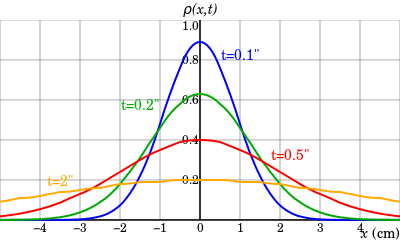Last week child number 1 managed to put a hole in a plasterboard (‘gib’) wall. I wasn’t in the room at the time, but I believe it had something to do starting at one end of the house, running down the corridor, through the bedroom doorway, doing a forward flip onto the bed and sliding feet first into the wall at the end of the other end of the house. Unfortunately the house isn’t built for gymnastic floor routines.
So we’ve been repairing the wall. Actually, it’s not that difficult to repair a hole in plasterboard, so long as it is only a few centimetres across. Secure a bit of mesh into the hole (get that at the DIY shop or make your own out of wire) and build up layers of wall filler. Then sand it back to be flush with the non-damaged wall, and paint. Probably the hardest thing will be to get the paint matching, but fortunately for us the previous occupants of the house have left behind some of the paint so we have that available.
However, one thing to pay attention to is making sure the filler is dry before painting. And that means waiting. The thicker the layer applied, the longer the wait needs to be. But it’s not a linear wait. The time needed to dry will vary as the square of the thickness. For example, a double-thickness of application (e.g 4 mm deep rather than 2 mm deep) is going to take four times the drying time. This means that, as tempting as it is to apply a really thick layer of filler into a deep hole, it’s going to be quicker to apply it in several thinner layers.
The drying time is a consequence of diffusion. The water in the filler needs to find its way to the surface and evaporate in order for the filler to dry. But the movement of each molecule of water follows a random ‘diffusion’ process. It doesn’t ‘know’ it has to move towards the outside surface of the wall – it is just as likely to work its way inwards or sideways. As a consequence, the distance moved over a given amount of time is proportional not to time, but to the square-root of time. Or, putting it another way, the time taken to find its way out from a given depth will vary as the square of the depth. This relationship is captured through the Diffusion Equation, which mathematically describes what is going on.
The overall effect is that the water molecules will move from high concentration to low concentration, but this is a consequence of random movement – simply, it’s more likely that a molecule moves from somewhere where there are lots of them rather than from somewhere where there are few of them, because there are more of them there to move in the first place. In the case of the drying wall filler, the filler exposed to the air will dry, and thus this outer surface will have a low concentration of moisture. The random movement of the molecules in the filler will result in more arriving at this outer surface and being removed b the air. Eventually, the moisture will get removed from the filler, but it’s a slow process.
Diffusion is important in biology, where many biochemical process rely on the arrival of molecules as a result of random motion.
And the wall? I’m pretty confident our filler is now completely dry, so Saturday will see some painting going on. But no-one is allowed to pretend they are Simone Biles anymore (at least, not inside the house).
